“Observatory Controlled Transmitter”, made by Gent in 1933. Serial nr. 3518.
The clock was retailed by Edwards, Glasgow, jeweller and watchmaker since 1839 who started selling Pulsynetic clocks in 1914.
In 1976 the Business was taken over by Mappin & Webb.

Top right: The see-saw mechanism that drops (when the right coil is activated through contact spring “S”) or lifts (left coil, spring “F) the weight on/off the tray on the pendulum.
Below: The adjusting weight, marked “N”. For finer results a smaller weight “F” was available.
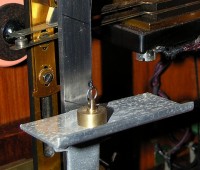
Right : “See-Saw” diagram from the Gent Catalogue Book 5, Section 4b, March 1931.
Below: The Impulse Time Dial for the 10.00am Time Signal with the two contact springs “S” and the longer “F”.
Right under: the Relay with terminals for the Time Signal and the separate see-saw battery.
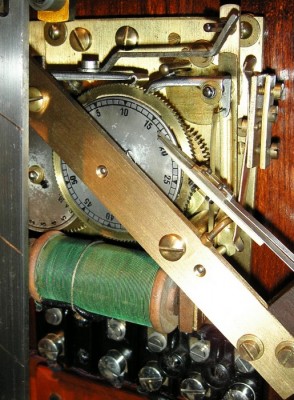
|
The “See-Saw Control” operates automatically, giving the Transmitter a slight gaining rate
when it is found by the Time Signal Standard to be “Slow” and inversely a losing rate if the
Transmitter is “Fast”. The rate of the Pendulum by the see-saw is thus altered automatically
by the Observatory Time Signal, coming in from the RGO by telegraph.
This signal passes through one Contact Spring (marked “S” in the drawing) of the
Impulse Time Dial on the Transmitter only if the Impulse Time Dial is “slow” on the arrival
of the Standard Time Signal, or through another Contact Spring (marked “F”) only if
the Impulse Time Dial is “Fast”.
These Contact Springs are connected respectivily to two Coils of two Electro-Magnets,
one of which “drops” a small weight on a tray fixed to the Pendulum Rod if the
Impulse Time Dial is “Slow”, with the result that the vibrations of the Pendulum are
accelerated, while the other Electro-Magnet “Lifts” the said weight off the tray if the
Impulse Time Dial is “Fast”.
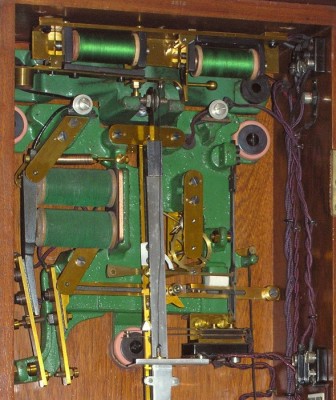
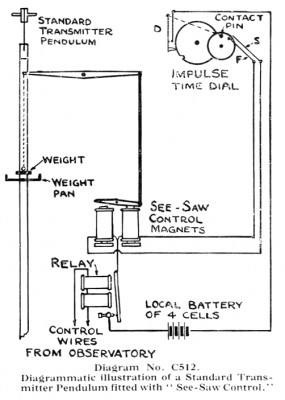
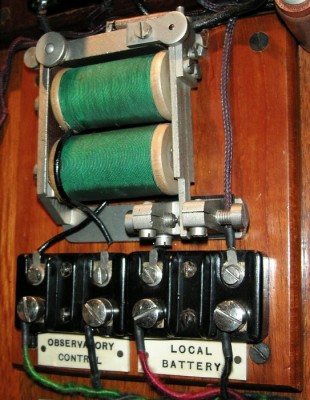
|